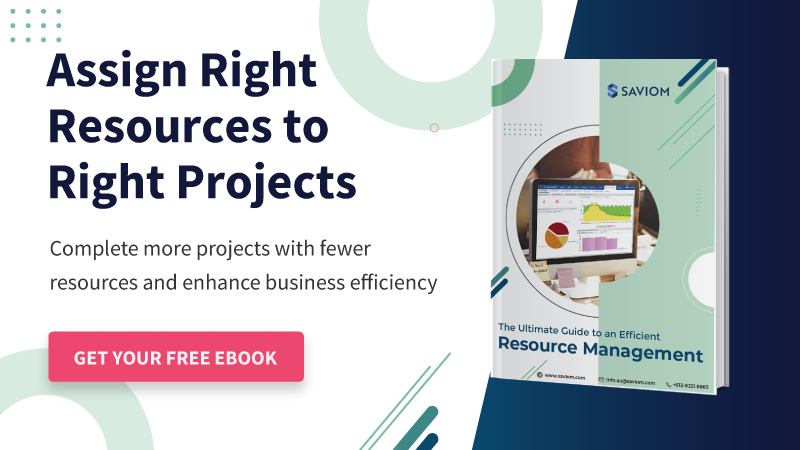Employee turnover has become an increasingly costly challenge for businesses, with recent statistics from Newswire showing that “replacing an employee now takes an average of 44 days. ”
To tackle this, organizations must prioritize creating an environment where employees feel valued, engaged, and motivated to stay for the long term. It’s no longer just about a paycheck— employees today seek growth, development, and a sense of purpose in their roles.
This article outlines simple yet effective strategies to help organizations retain their top talent, reduce turnover, and cultivate a positive work environment.
But before diving into the strategies, let’s first understand the term “employee turnover.”
What is Employee Turnover?
Employee turnover refers to the rate at which employees voluntarily or involuntarily leave an organization within a specific period. A high turnover rate signals underlying issues like low job satisfaction or poor work culture, while a lower rate may indicate a more engaged and stable workforce. Regularly tracking employee turnover rates helps businesses identify attrition patterns , address potential concerns, and reduce hiring/firing costs.
Now, let’s move on to understand how it can be calculated.
How to Calculate Turnover?
Understanding employee turnover is essential for assessing an organization’s health and stability. It helps organizations track the frequency of employee departures, optimize retention strategies, and identify areas needing improvement. Turnover rates can be calculated on a monthly, quarterly, or yearly basis.
To determine the staff turnover rate, the following steps can be implemented:
- Identify the total number of employees who left the company during the specified period.
- Calculate the average number of employees working within that period.
- Divide the number of employees leaving by the average number of employees.
- Multiply the result by 100 to get the turnover rate as a percentage.
The formula to calculate the employee turnover rate is:
Turnover Rate = Number of Employees Leaving/Average Number of Employees × 100
Let’s say a company wants to calculate its annual turnover rate. They begin the year with 150 employees, and by the end of the year, 25 employees have left. To calculate the turnover rate, the company will have to follow these steps:
- Average Number of Employees (150)
- Number of Employees Leaving (25)
Now, if we put these values into the formula
Turnover Rate = 25/ 125 × 100 = 16.7
Similarly, the number of employees leaving in a month needs to be considered to calculate the monthly turnover rate.
Now that we know how to calculate employee turnover, let’s explore various types of employee turnover.
Types of Employee Turnover
There are majorly 4 types of employee turnover as listed below:
Voluntary Turnover
Voluntary turnover happens when employees decide to leave the company they work for by choice. By gaining deeper insights into factors driving employee departure, companies can create more effective strategies to retain top talent. This, in turn, helps reduce turnover rates significantly.
Involuntary Turnover
Involuntary turnover occurs when an employer decides to terminate an employee. This type of turnover can result from performance issues, organizational restructuring, or other business needs. Here, addressing the underlying causes can help improve overall workforce stability.
Internal Turnover
Internal turnover occurs when employees leave their current positions for new roles within the same company. It usually indicates opportunities for upward or lateral mobility. Moreover, it’s essential to understand the reasons behind these moves as these transitions can have a negative or positive impact on team dynamic dynamics and organization workflow.
Retirement
Retirement marks the transition of employees from active work to a phase of life where they withdraw from their careers, often after many years of service. This type of departure may leave an intellectual hole, so companies must invest in effective succession planning to ensure operational continuity.
Let’s now explore the key factors that contribute to employee turnover in organizations.

Causes of Employee Turnover in Organizations
High turnover rates can be detrimental to organizations due to the significant costs associated with replacing employees. Here are the common factors that contribute to high employee turnover:
Lack of Purpose and Direction
When organizations fail to communicate a clear or meaningful purpose, employees may feel disconnected from their company’s mission or how their work contributes to broader business goals. This lack of purpose and direction can diminish job satisfaction, hamper engagement, and lead to unplanned attrition.
Limited Career Growth Opportunities
A lack of defined career paths and growth opportunities creates a gap in employee satisfaction and engagement. Furthermore, without access to career development initiatives such as leadership training or skill development opportunities, employees are inclined to seek these opportunities elsewhere. This causes organizations to lose valuable talent and incur the costs of hiring and training new employees.
Employee Burnout
According to a Deloitte survey, “42% of employees have left their job due to burnout.”
At times, increased workloads are not entirely avoidable as employees might need to put in more work hours during peak seasons or in larger projects with strict deadlines. However, if employees are persistently overloaded, this may lead to burnout, job dissatisfaction, and eventually turnover.
Read More: How Workforce Planning Prevents Employee Burnout Down the Line?
Ineffective Management and Leadership
According to a Gallup study, “ 75% of workers who voluntarily leave their jobs do so because of their bosses and not the position, the role itself or the company.”
This statistic sheds light on the harsh reality of how unsupportive managers or leadership can drive employee turnover. When supervisors set unrealistic deadlines, overburden their team, or fail to promote a healthy work environment , it can compound employees’ stress levels and lead to turnover. Additionally, factors like lack of management support, unclear communication, or insufficient recognition push employees to leave the organization.
Absence of Work-Life Balance
According to a Flexjobs survey, “ 82 percent of respondents say they would be more loyal to their employers if they had flexible work options.”
An ongoing work-life imbalance can be a major cause of employee turnover. When work consistently disrupts personal time, it leads to stress, reduced job satisfaction, and eventual burnout, making it difficult for employees to maintain long-term engagement in the company.
Misalignment Between Culture and Values
If employees feel that their values or beliefs do not align with the company’s culture, they may choose to leave. A toxic or unsupportive work environment, lack of inclusion and diversity, or a mismatch between an employee’s and company’s values can all contribute to turnover.
Having explored the key causes of employee turnover, let’s delve into the consequences of excessive employee turnover.
Read More: How Can Your Work Culture Improve the Employee Experience?
What is the Impact of a High Employee Turnover Rate?
High employee turnover lowers the overall efficiency and profitability of the organization. Here are some expected consequences associated with high turnover rates:
Increases Overall Costs
Frequently replacing departing employees can be costly as companies must invest in advertising job openings, conducting interviews, onboarding new hires, training them, and providing specific licenses. Thus, high turnover rates can lead to a continuous cycle of recruitment and training, which puts the company in financial strain.
Read More: How Resource Management Helps in Reducing the Hiring/Firing Cycle?
Decreases Workplace Morale
High employee turnover disrupts stability and teamwork, making it challenging to foster a collaborative team culture. Moreover, frequent departures, particularly of skilled employees, reflect poor management and can hinder effective communication. This fosters a negative workplace perception, ultimately lowering overall morale.
Lowers Employee Productivity
When employees leave the organization, existing workers experience a loss of productivity as they spend time training new hires to get attuned to the new work. This not only leads to lower employee productivity and subpar work quality but also disturbs the business’s day-to-day operations, ultimately lowering overall output and negatively impacting the company’s performance.
Read More: Employee Productivity: What is it & Why Does it Matter?
Loss of Institutional Knowledge
Experienced employees who quit the organization take their knowledge, skills, and experience with them. This loss of institutional knowledge can harm the organization, especially if they hold critical or specialized roles. New employees may take time to gain the same level of expertise, impacting decision-making, problem-solving, and overall organizational effectiveness.
Disrupts Team Dynamics
Companies with high turnover rates can disrupt team dynamics and working relationships. Cohesion within teams may be affected as members constantly adjust to new colleagues. Moreover, continual turnover can lead to decreased morale, increased stress, and a lack of stability, negatively impacting teamwork and collaboration.
Impedes Company Reputation
High turnover rates can damage a company’s reputation, both internally and externally. Internally, high turnover causes decreased loyalty and morale among the remaining employees. Externally, it signals instability and poor working conditions, ultimately portraying the company as a less desirable place to work.
Hence, it is imperative to proactively address the challenges organizations face due to high turnover rates. Now, let’s take a look at some actionable strategies to reduce employee turnover.
12 Effective Strategies to Reduce Employee Turnover
To retain your best employees and reduce turnover, it’s crucial to implement strategies beyond just offering good salaries and career growth opportunities. Here are some key approaches organizations must take to minimize the impact of turnover:
Recruit the Right Talent for Your Organization
Hiring a resource should never be a spur-of-the-moment decision; rather, it requires meticulous planning and preparation. It is essential to align the candidates’ skills with the company’s needs and values. For this, managers must have a clear view of future project requirements and conduct a capacity vs. demand gap analysis to identify skill shortages.
By recognizing these needs, companies can develop targeted talent management strategies to ensure the right fit is recruited at the right time and cost. This helps avoid costly last-minute hires and ensures a high-quality resource pool, minimizing project delays and maintaining high-performance levels.
Allocate Resources to Appropriate Tasks
When resources are allocated to tasks that do not align with their skill sets or interests, it often leads to disengagement and reduced productivity. Moreover, if the resource is underqualified, they can feel overwhelmed when executing critical tasks beyond their capabilities. On the other hand, if over-qualified employees are deployed to low-priority tasks, they feel their potential is not being realized and become demoralized.
In either case, the chances of turnover are high. Therefore, allocating the right resources to the right job is important to ensure employee satisfaction. Managers must implement an intuitive resource scheduler like SAVIOM to ensure competent resource allocation across the enterprise. It provides a unified view of the workforce’s skills and schedules, allowing managers to book suitable resources for projects. This ensures full utilization of employees’ skills, boosts productivity, and reduces churn.
Read More: Resource Allocation: A Guide on How to Apply it to Project Management
Provide Competitive Compensation and Benefits
As per a LinkedIn report, “firms that provide good compensation and benefits witnessed a 56% lower attrition compared to those that offer poor salary packages.”
A major contributing factor to high employee turnover is inadequate compensation and benefits. Being underpaid makes employees feel undervalued and unappreciated, increasing the likelihood of them leaving the organization for a competitor. Thus, it is imperative for businesses to offer competitive compensation packages as per market standards to retain their top talent.
Organizations must also provide additional benefits such as paid time off, commission, bonuses, health insurance, stock/equity, retirement funds, etc., to boost employee satisfaction and engagement. Ultimately, offering competency-based salaries and benefits shows that organizations care about their workforce’s well-being and contribution, which results in greater employee retention.
Optimize the Utilization of Every Resource
Sub-optimal utilization can severely impact employee productivity and engagement. Overutilization causes work-related stress and burnout, while underutilization of resources leads to low morale and disengagement. Both these instances result in job dissatisfaction and attrition.
Thus, optimizing resource utilization in real-time is critical to maintaining productivity. Managers can track and redistribute the workload of under/overloaded resources to minimize the risk of disengagement or burnout. Moreover, they must periodically mobilize resources from non-billable to billable or strategic tasks. This will help improve profitable utilization.
Read More: What is Resource Optimization? A Complete Guide to Improve Project Delivery
Implement Diversity, Equity, and Inclusion (DEI) Initiatives
DEI initiatives are an excellent pathway for organizations to build inclusive work environments that value employees’ contributions and provide equitable opportunities to everyone, regardless of their socio-economic backgrounds. More importantly, these initiatives help curb instances of hostility, microaggressions, and unconscious bias in the workplace.
Therefore, by incorporating DEI practices, organizations can nurture a safe and equitable environment, which can reduce employee turnover and improve retention significantly. They must first analyze the internal pool and their demographics to understand where they are lacking. Next, they can create anti-harassment, family-friendly, and disability policies to accommodate their employees’ needs. Lastly, they must adapt their hiring strategies to actively recruit from underrepresented groups.
Recognize and Reward Employees Fairly
Employees need a boost of motivation every now and then to perform to the best of their abilities. When they feel their work is not being recognized or appreciated by their superiors, it can demoralize them and affect their productivity. Therefore, organizations must devise a framework to reward their top-performing employees and keep them motivated.
For this, supervisors can regularly track and analyze the performance of their resources. They can identify high-performing candidates and incentivize them with bonuses, paid time-off, thank-you emails, certifications, etc. By rewarding them appropriately, organizations can retain these employees in the long run and prevent attrition.
Read More: 5 Benefits of an Employee Recognition & Rewards Program
Provide Flexible Work Hours
Offering flexible working arrangements such as remote/hybrid work, compressed hours, flexitime, job sharing, etc., is beneficial because it allows employees to balance personal and professional commitments. This helps reduce stress, enhance job satisfaction, and boost long-term retention.
Moreover, empowering employees to choose their working hours gives them a sense of control and accountability, which ultimately enhances job performance. Flexible work schedules also help cater to a diverse workforce, including new parents or those pursuing higher education. It helps in retaining employees who otherwise leave for personal reasons.
Ensure Effective Bench Management
When a project reaches the closure stage, many resources are rolled off, and they end up on the bench. Extended bench time leads to billable loss as the employees are not generating revenue for the organization. Moreover, it can demoralize resources as they feel their expertise is not being utilized effectively. Consequently, it can lead to unplanned attrition, which affects a firm’s reputation.
To avoid such a scenario, managers must foresee when workers are about to hit the bench and accordingly assign them to appropriate billable or strategic work. If their skills are unsuitable for any project vacancies, then managers can initiate on-the-job training or reskilling initiatives to make them billable.
Organize Effective Team Building Activities
Facilitating strong bonds among colleagues boosts employee productivity and improves engagement. Therefore, companies should prioritize interpersonal relationships, as cohesive teams lead to enhanced communication, lower stress, and higher output.
One example is the buddy system, where new hires are paired with mentors to guide them through protocols. This system ensures new employees feel welcomed and supported. Additionally, activities like monthly team lunches or informal meetings can further strengthen team dynamics.
Design Tailored Training and Development Programs
Offering tailored training and upskilling programs equips employees with the skills they need for their roles and shows the company’s commitment to employee growth. Managers can create an Individual Development Plan (IDP) to help employees meet short- and long-term career goals while improving job performance.
In addition, training facilitates self-growth, allowing employees to contribute better and take on more responsibility or qualify for higher roles. This approach fosters engagement and ensures that employees feel valued, reducing the likelihood of seeking opportunities elsewhere.
Read More: How Can Retraining/Upskilling Future-Proof Your Workforce?
Identify Top Performers for Succession Planning
Employees who go beyond their job description and exhibit leadership deserve a pat on the back.
Every business relies on a core group of diligent employees who consistently show up, complete their tasks, and maintain workflow efficiency. These “worker bees” are essential for efficient daily operations. Thus, to foster real growth and innovation within the company, it’s crucial to support, nurture, and reward top performers.
These key performers are ideal candidates for senior or strategic roles, offering them opportunities for upward mobility while diversifying their skill sets. This enhances their job satisfaction and engagement. Furthermore, it helps the organizations to establish a robust talent pipeline that is immune to disruptions caused by unplanned attrition or dynamic market changes.
Develop a Robust Performance Appraisal Framework
A comprehensive performance appraisal framework is necessary because it allows managers to share constructive feedback with employees. It gives them an opportunity to acknowledge employees’ strengths and also address the areas of improvement. When resources know their leaders are promoting individual development, it boosts their motivation levels and eventually increases retention.
While giving feedback is necessary to help the workforce grow, it is also important to take feedback from them. Employee feedback through surveys and one-on-one sessions is instrumental in understanding their experience and expectations. It gives them a voice, creates a sense of belonging, and helps managers align individual goals with overall business objectives.
Conclusion
Reducing employee turnover relies on addressing both the personal and professional needs of employees. Companies can significantly enhance employee retention by prioritizing competitive compensation, flexible work arrangements, effective performance appraisals, and tailored career development programs. Furthermore, creating an employee-centric environment helps retain top talent and ensures long-term success in today’s competitive job market.
The Glossary
Read More: Glossary of Resource Workforce Planning, Scheduling and Management
The SAVIOM Solution
SAVIOM is the market leader in offering the most powerful and configurable solutions for managing enterprise resources efficiently and effectively. Having more than 20 years of experience, this Australian-based MNC has a global presence in over 50 countries. It is also popular with more than 100 customers and helping them to achieve their business goals. SAVIOM also has products for project portfolio management, professional service automation, and workforce planning software which can be easily customized as per business requirements.











